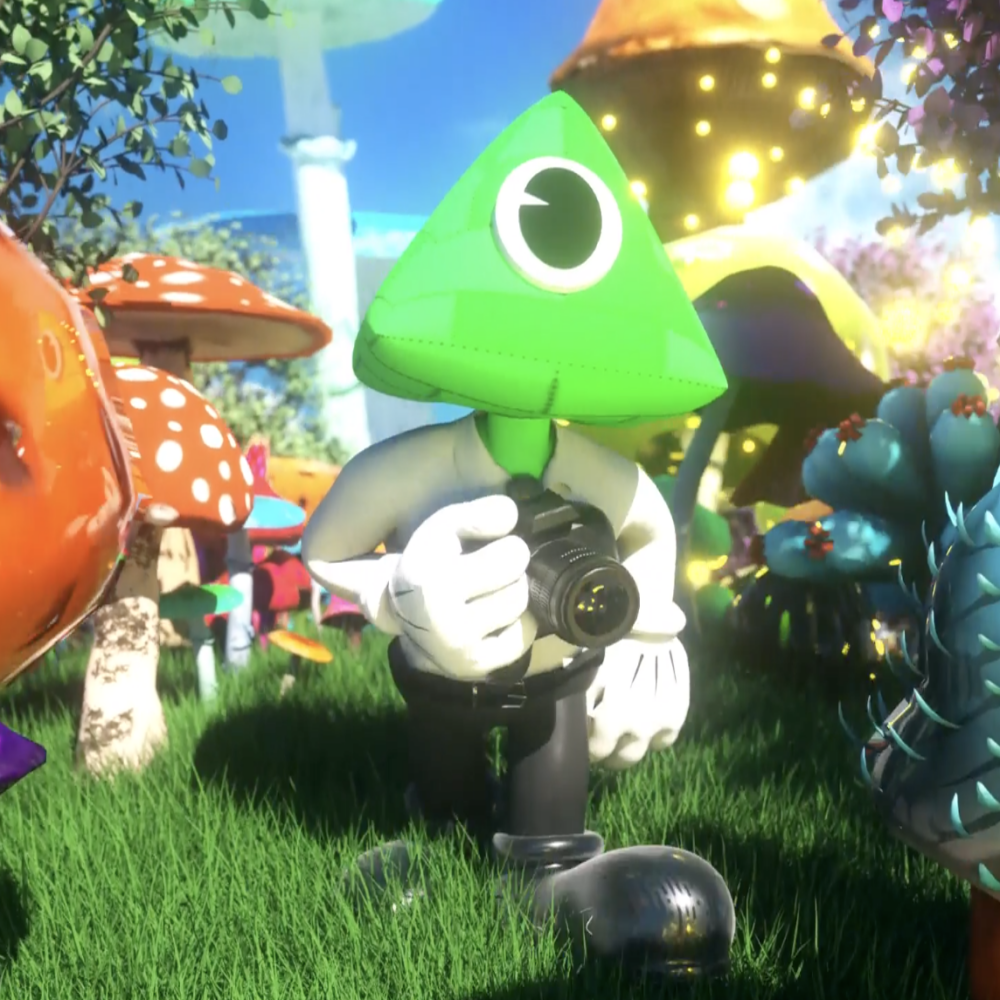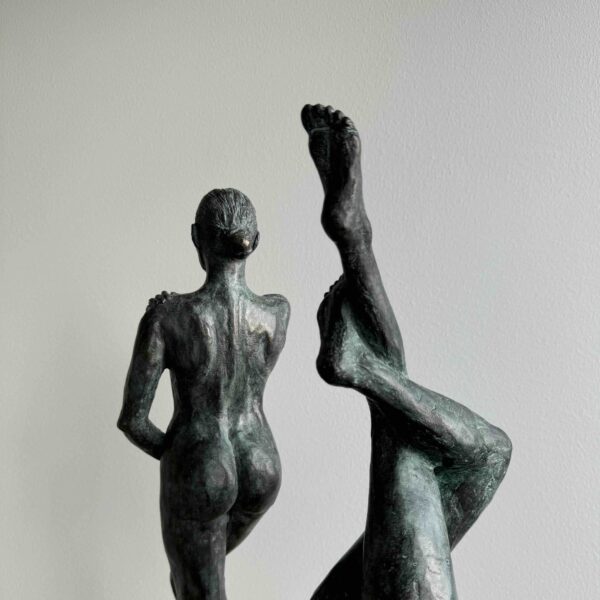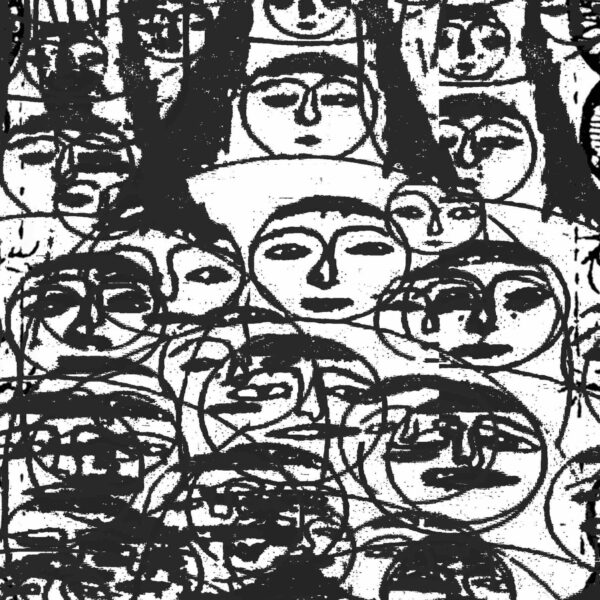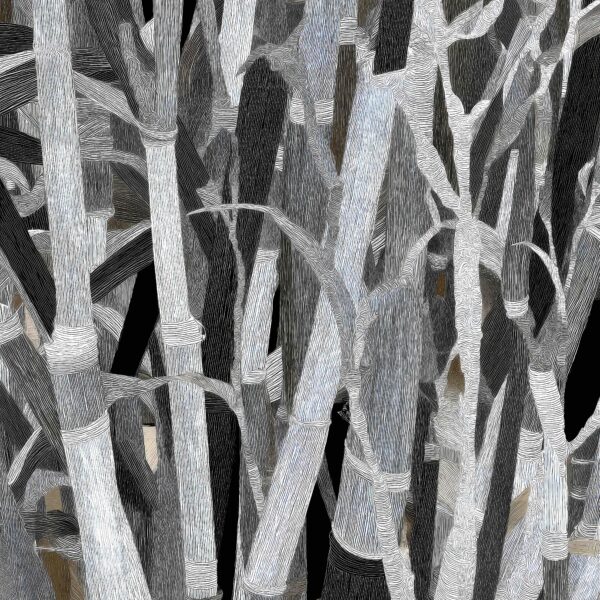Master of the Meta-Canvas: SuperTrip’s Evolution as a Creative Force
SuperTrip is a revolutionary 3D artist and game designer who has become an icon in the crypto community. His work stretches past the stationary visual- he utilizes sound, camera movement, and 3D interactivity in his art. In this interview, we discuss his past, his style, and SuperTripLand– his video game. Please note, this conversation has been edited for brevity and clarity.

Q: Where did the SuperTrip brand come from?
SuperTrip: I started this brand as soon as I graduated high school. I was doing heavy filmmaking and editing in high school, middle school, and elementary school. As soon as I graduated, I was like, “You know what? I should probably gamble with this and just create whatever the hell I want to do.” I started doing these fan edits to artists and stuff. I learned 3D about a year and a half later– and I totally mastered 3D, to toot my own horn– building up an audience on Instagram and TikTok. Finally, in 2021, I was brought into the beautiful world of NFTs and became part of this amazing, very gifted community. The rest is history. So I’ve been doing this Web3 stuff for the past two years, and it’s been the greatest gift ever.
Q: Were you interested in art growing up? What’s the story there for you?
SuperTrip: I started doing all this when I was a young child, but I didn’t know it was going to be my career until a couple years ago. I had an old-ass Windows computer when I was seven– it was our family computer. There were two programs on it– Microsoft Paint and Windows Movie Maker. Windows Movie Maker is the one I became obsessed with. I was literally six or seven, filming on my shitty old iPad and editing these really bad movies together. Then, in middle school, I started making more heavy films with my friends. Finally, in high school, we started getting actually good. At the end of high school, I moved away from filmmaking and created this SuperTrip account. I started creating the psychedelic edits that I’m known for, and built up this magical audience of people. It’s been a nice progression from movies, to editing, to 3D, to now finally, the game, which I’m very lucky to be doing.
Q: Did you go on to study art and 3D work after high school? What was your educational journey like?
SuperTrip: I was a B, C student. I didn’t really try, but I got by. In college, I was like, “Okay, this is my last chance to get my shit together.” I started studying really fucking hard. I began getting A-pluses in all my law classes. I was majoring in history and my GPA was fucking stellar. Sophomore year of college I was doing all the art stuff on the side for fun, just building up an audience. Not making money at all. That’s the year I minted my first piece. That totally changed my perspective on my art, because I had people who were actually giving value to my work, which had never happened in my life before. These were just pure collectors who bought my work and never complained at all. It was the most beautiful, profound feeling in my life.
I mean, if I didn't play video games growing up, I would not be doing really any of this. So I think video games are the most inspirational art form, as corny as that sounds.
Q: Can you describe what goes into creating these pieces? How do you make them?
SuperTrip: Yes. So the 1/1s and the trippy editions are two different thought processes. The 1/1s take several weeks to complete. For 1/1s, the process is you usually– think of an idea. I usually think of the name of it first, as crazy as that sounds. Each piece has a certain camera movement, and I just sit down on Cinema 4D and I build around the idea that I have with the camera movement. So yeah, the first part is the idea, then it’s the execution from the 4D, putting all the 3D objects together, then animating everything, then adding the camera movement, all the characters, and everything. Finally, I dress it all up in After Effects and do all the sound design and final touches. I spend more time on final touches than the actual piece, because that’s what glues everything together. The tiny details and all the extra cute stuff is what turns a shitty piece into a beautiful, profound one. In terms of the trippy pieces, creating them takes me on a similar path, except the camera’s usually stationary. So, for those, I’m building this whole entire world around the camera, and combining whatever ideas or meanings I want to project. Some of them are totally fun to look at and fire up the dopamine, whereas others have actual messages behind them.
Q: You’re making a game, which is a huge part of your aesthetic. Did you grow up gaming a lot? Can you talk more about that?
SuperTrip: Yeah, 100%. Yeah. My full entire childhood was… Not all of it, but I spent probably 25% of my childhood just playing the greatest video games of all time and just getting lost in these beautiful creations. I mean, if I didn’t play video games growing up, I would not be doing really any of this. So I think video games are the most inspirational art form, as corny as that sounds. There’s just so much, it’s like every decision you make in a game is entirely unique. You can never repeat that same experience. Every button you press leads to an entirely different array of options. It’s just the most profound art form in the history of art. It invites the audience and the player, which other art pieces is like, okay, here, here’s a 2D image, here’s a 2D video, this is what you get, this is what you’re looking at, and there’s nothing you can do about it. Whereas with a game, there’s so many interactions and the variables that get fired off every millisecond.
Q: What were your favorite games growing up?
SuperTrip: That is a very hard question, but I’ll give you my top three. Mario 64, obviously. GTA Vice City and Legend of Zelda: Ocarina of Time.
Q: For someone who is totally unfamiliar with what SuperTripLand is, can you explain what the game is?
SuperTrip: SuperTripLand is a web browser game, meaning you can play it in your browser without downloading anything. It’ll just run straight in Chrome or Safari. It’s going to be on mobile by the time this interview’s out. Basically, it’s the central hub to connect all of my audiences together– the collectors, the average player, and the enjoyer of art. Every piece I’ve made so far is going to be connected to this one giant hub. It’s multiplayer and it’s free to play. There are no in-app purchases. So there are basically two mechanics to it– there’s the hyper casual mode, which, as of right now, is just the arena where they can run around and collect coins and buy pieces with those coins. Slowly but surely, it’s going to be updated so that every world I’ve made so far will be in it. You can explore and interact and view the worlds I’ve built in a totally new experience. I have 3D objects called Nexuses, which are its own collection, but now they’re finally incorporated in the game. A week ago, we did a crown drop where you get 1,500 coins to buy a crown, and then the crown is on Ethereum. People are basically playing the game and winning one of my pieces. It was a very intense couple of days. People were just literally grinding for tens of hours to collect this piece, which is an insane thought, but it’s kind of proof that this works. If you grind enough, you can get a verified token. It’s a beautiful thing.
Q: On that topic of gaming, many people in crypto believe gaming was a core tenant of the early thesis around the metaverse. At the same time, gaming gets a lot of flack for sucking kids into their screens and lowering the amount of social interaction they are getting. Where do you fall between these philosophies?
SuperTrip: I agree with both those statements. I would say, and this is going to sound very harsh, but there’s a very large group of adults who just rot themselves away in front of their screen. They really get to escape from reality through a video game. If you treat video games like a drug, it’s going to become a drug. Ever since I started creating my game, I know it sounds weird, but I can’t even enjoy games in an old way anymore. I find myself trying to dissect every aspect of the game rather than just enjoy it– which I think is a beautiful thing. I can’t get addicted to games anymore because I know how they work.
Try new mediums. Always evolve. Never stick with one thing, and you'll feel fulfilled. There's a million ways to make art a career.
Q: Can you elaborate on the addictive nature of games?
SuperTrip: The majority of games today are designed to be addictive– these companies are really just creating drugs for people to get sucked into and rot their precious hours away. These companies value hours more than dollars, because if you’re playing a game and you’re not spending a dollar, your time is so much more valuable. They can advertise it everywhere, “we have a million active users at once, but they’re not buying anything, but they’re just playing every second, we really have a mind control spell on them to suck their precious hours out of them.” For example, in the app Pokémon Go, there’s a feature called gifts. You can send your friends gifts, and you don’t know what they’re going to receive. With this gifting feature, you can start streaks. So you’re encouraging a player to come back every day, open their gifts, and then send a gift to give their friends. You’re basically manipulating their monkey brain into coming back every day to play.
Q: What is your best advice for artists who are building either worlds, games, or characters?
SuperTrip: My advice is you really have to have a vision of what you’re trying to accomplish. This goes for anything in life, not just art. If you’re going to be spending all this time and effort and labor and love and pain, you have to have a vision. So if your vision is to build an audience, cool. You have a simple formula– just make fast paced shit and you’ll build an audience. If you’re fulfilled by a large audience, then you succeeded in your goal. If your goal is to make profound art that challenges you, that solves problems in your head, that you can conquer, then create insane new stuff. Try new mediums. Always evolve. Never stick with one thing, and you’ll feel fulfilled. There’s a million ways to make art a career. If you want to be fulfilled at the end of day when you go to bed, you have to have a clear vision of what fulfills you. There’s nothing wrong with being fulfilled by money. There’s nothing wrong with being fulfilled by follower count. There’s nothing wrong with being fulfilled by creating problems and then solving them. If you do whatever it is that fulfills you, then you succeeded at your mission in life.


